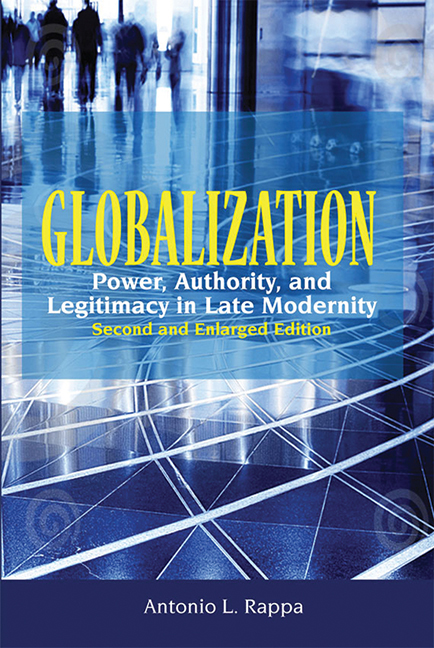Summary
In the first edition of this book, the themes of hope, optimism, and progress were examined in Asia and America based on a distinction between Americanization and globalization within a neoliberal capitalist world order. The second edition, Globalization: Power, Authority and Legitimacy analyses how a new pessimism has descended on the globalized world. The America that was once the bastion of hope, optimism, and progress is now showing clear signs of a superpower in decline. The first sign of the American decline since 1941 in Pearl Harbor was the destruction of the World Trade Center in New York City on 11 September 2001. The other signs are the “Vietnamization” of Iraq, a nuclear stand-off with North Korea, increasing trade imbalances with China and India, a stalemate with terrorists in Afghanistan, the challenge of European protectionism, a belligerent politics in the Middle East, overt American dependence on oil and fossil fuels, and the mushrooming of various sub-prime crises into an escalating global recession. This second edition incorporates the latest developments in terms of culture, wealth, and terrorism around the world and provides possible solutions to salvage the American Dream. Globalization began with several assumptions. Firstly, the American public has become beholden to the U.S. government and that the latter made unilateral policy decisions that did not reflect the views of the public. In late modernity, that dependence has expanded to include many non- Americans. Secondly, the mismeasurement of cultural tropes existing in late modernity has entrenched neoliberal capitalist structures and embedded financial problems that emerge when the cracks occur at the surface. The most recent spate of cracks that led to Black October was the U.S. sub-prime crisis. It was a crisis ignored because Bush and his administrators were bogged down with discovering or inventing weapons of mass destruction as well as fighting hidden terrorists in Iraq and Afghanistan.
On the home front, the powerful superpower in decline sometimes reveals its economic underbelly. America would not be able to function without illegal Mexican workers. Nevertheless, the U.S. Senate has approved the building of a state-of-the-art, triple-layered fence worth US$8 billion that is about 800 miles long for the 1,900 mile long U.S.-Mexico border. This plan seems ill-conceived and does not take into account the complex history of Hispanic Americans, non-Hispanic Americans, and Native Americans in late modernity.
- Type
- Chapter
- Information
- GlobalizationPower, Authority, and Legitimacy in Late Modernity (Second and Enlarged Edition), pp. 286 - 310Publisher: ISEAS–Yusof Ishak InstitutePrint publication year: 2011

